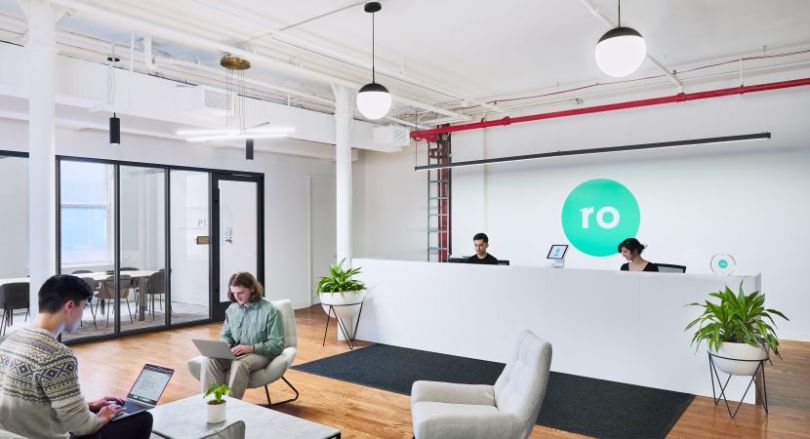
During a pandemic, it’s not hard to understand why people would rather see a doctor through a screen instead of in-person. However, even after the pandemic passes, consulting firm Frost & Sullivan forecasts that the industry will grow seven-fold by 2025.
That’s good news for companies like Ro, the direct-to-consumer telehealth company best-known for Roman, its men’s health division. According to CTO Todd Levy, the company has big plans for the future, which include launching a mail-order pharmacy and expanding its platform to cover more basic healthcare needs.
However, what most excites Levy about the future of telehealth is its potential to reshape the doctor-patient relationship.
“Online platforms offer a number of advantages that are difficult to replicate in the traditional healthcare system: immediate access to care, intelligent, real-time matching of clinical expertise to patient needs and an increased frequency of touchpoints and latent diagnostic analysis,” Levy told Built In. “All of this combined creates an opportunity to transform the current relationship many patients have with their doctor into one that is continuous, collaborative and comprehensive.”
We recently sat down with Levy for a wide-ranging interview that covered the future of telehealth, the present-day challenges created by the coronavirus and the one technology his team believes has the potential to shift the industry.
From a technology standpoint, how has the coronavirus impacted Ro? Did your tech team have to account for the sudden surge in demand, and if not, what factors made your technology able to handle such a large influx of new patients?
Demand for Ro’s services has been extraordinary — we’re shipping more medications to more patients than ever before. From a technical perspective, we’ve greatly benefitted from a series of intentional choices we made from the outset.
First, we decided to invest in and own as much of our technical stack as possible. In just two and a half years we’ve scaled to treat almost 20 conditions end-to-end and launched an entirely new service, Ro Pharmacy. We’ve optimized the performance and extensibility of our system and have seen that pay off through the continued demand in recent months.
Second, we have given full consideration to every portion of the healthcare journey. The early and ongoing investments in pharmacy and fulfillment infrastructure, our physician electronic medical records and our patient applications have increasingly reaped benefits and allowed us to fully understand the bottlenecks and workflow limitations of traditional systems. We’ve taken those learnings and applied them at scale to reduce the friction our clinicians and pharmacists encounter in the administration of care.
What lasting impact will COVID-19 have on the telehealth industry — and on Ro specifically?
COVID-19 shined a spotlight on how overburdened our healthcare system is and how telehealth companies like Ro could help by eliminating unnecessary in-person doctor’s visits. If telehealth can help with just this point, it’ll save patient lives while reducing provider burnout. One way Ro demonstrated how telehealth can complement in-person care was by launching the first free nationwide telemedicine triage service for COVID-19. We launched it in just 96 hours in early March by leveraging our existing technology. We’ll hopefully continue to see more people use telehealth for conditions they can safely treat remotely, reserving in-person care for those who need it most.
Expanding access to care is one of our biggest priorities.”
Aside from the pandemic, are there any specific trends or technologies that are driving major shifts in telehealth?
We’re closely following the evolution of connected health devices that unlock new categories of diagnostic data that patients can share with their clinical team. Along with supporting the diagnosis and treatment of conditions currently addressed by telehealth, these advances will make conditions previously requiring in-person visits and lab work more accessible and safe to treat using telehealth platforms.
We built our diagnostics ingestion and management infrastructure with these advances in mind so that as they enter the market, we can seamlessly integrate connected devices and sensor data into our platform. We also expect next-generation clinical care platforms to be built in a way that natively supports and leverages this previously sparse or inaccessible data. The combination of intelligent clinical support systems and improved remote diagnostic capabilities will fundamentally transform the efficacy of care, enabling clinicians to approach treatment in entirely new ways.
The capabilities of telehealth may be evolving, but according to a 2019 J.D. Power survey, the majority of Americans either lack access to telehealth or are unaware of how to access it. How is Ro addressing these challenges?
Expanding access to care is one of our biggest priorities. We have patients in 96 percent of primary care deserts, or areas with an insufficient number of providers. The more that we can increase access to high-quality internet, the greater adoption of telehealth we’ll see. One way Ro is democratizing access to care is through cost. Our newest service, Ro Pharmacy, is a mail-order pharmacy where over 500 medications will be available for just $5 per month, entirely cash pay, no insurance required.
How will telehealth evolve over the next five years, and what role will Ro play in driving the industry forward?
We’ll continue to see telehealth unburden the healthcare system. Both patients and providers will be more empowered as new data is integrated and increasingly complex treatments become commonly addressed. In the next six months, Ro will be growing our tech organization in support of these initiatives, opening up more pharmacies across the U.S. and offering coverage for 10 more conditions on the platform. We’ll continue to take on more and more of a patient’s basic health care needs, providing a more holistic, comprehensive and accessible healthcare experience.




